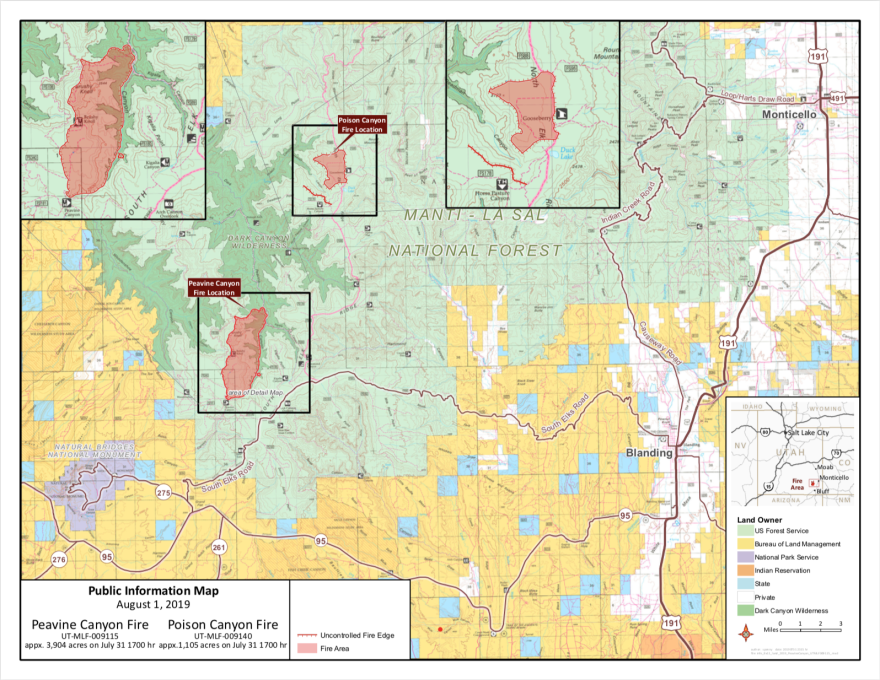The word wildfire tends to invoke fear, but some wildfires are actually good. According to the U.S. Forest Service, the Peavine and Poison Canyon fires currently burning in the Manti-La Sal National Forest will help the environment and act as future fire suppressants.

The Peavine Canyon Fire started July 16, while the Poison Canyon Fire started 10 days later. Together, they have burned around 5,000 acres in San Juan County.
Lightning started both fires, according to Forest Service spokeswoman Heather McLean. But rather than rushing to extinguish them, the agency has opted for a management strategy that involves letting them burn.
“The start was far back in the wilderness where there weren’t any values at risk, like people’s homes or infrastructure,” McLean said.
Firefighters have been helping the flames along, said Monticello District Ranger Michael Diem. More than 100 personnel are assigned to Peavine and Poison Canyons, and they have been lighting small, controlled fires along roads and trails to create buffer zones to stop the wildfire’s spread, as well as lighting small fires inside these boundaries to encourage burning.
McLean said the Forest Service doesn’t expect the fires to grow much bigger. They’ll stop as they approach these buffers and continue to burn internally.
“They will naturally burn themselves out as the thunderstorms go across, and it will actually work quite well,” she said.
Because of the conditions resulting from a wet spring and good snowpack, the fires aren’t destroying everything in their path. They are burning in a “mosaic” pattern, according to McLean, and will leave behind plenty of healthy foliage.
“People have an idea that when fires burn — everything is black,” she said. “But fires that burn naturally in the right conditions don’t burn like that. They just burn in places where there’s fuel.”
Diem said fires like this benefit the overall health of the forest. They open up areas for elk and deer to forage, as well as for hawks and Mexican spotted owls to hunt. The fires are also creating a patchwork of burned out areas that will act as buffers for wildfires later in the season.
“Every few years, you get these opportunities,” he said. “This is an example that you can have fire that has beneficial effects on the ground.”
The Forest serves hopes to educate the public about the benefits of naturally-occurring wildfires, McLean said. Rather than “fighting” fires, the Forest Service talks about “managing” them.
“I do feel like people are starting to understand that we have to allow these fires to burn when the conditions are right, so we don’t have huge, scary, destructive fires later,” she said.
Kate Groetzinger is a Report for America corps member who reports from KUER's Southeast Bureau in San Juan County.





